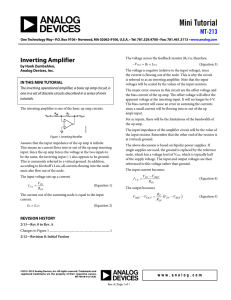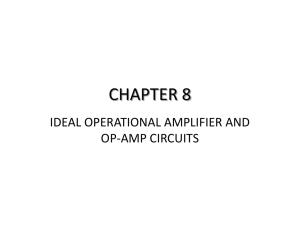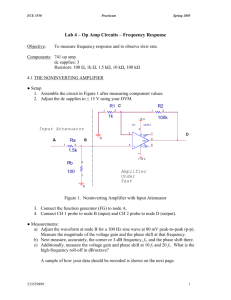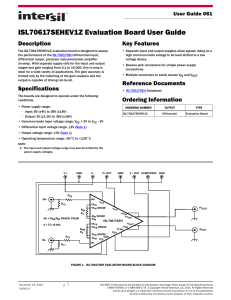Mini Tutorial MT-214
advertisement
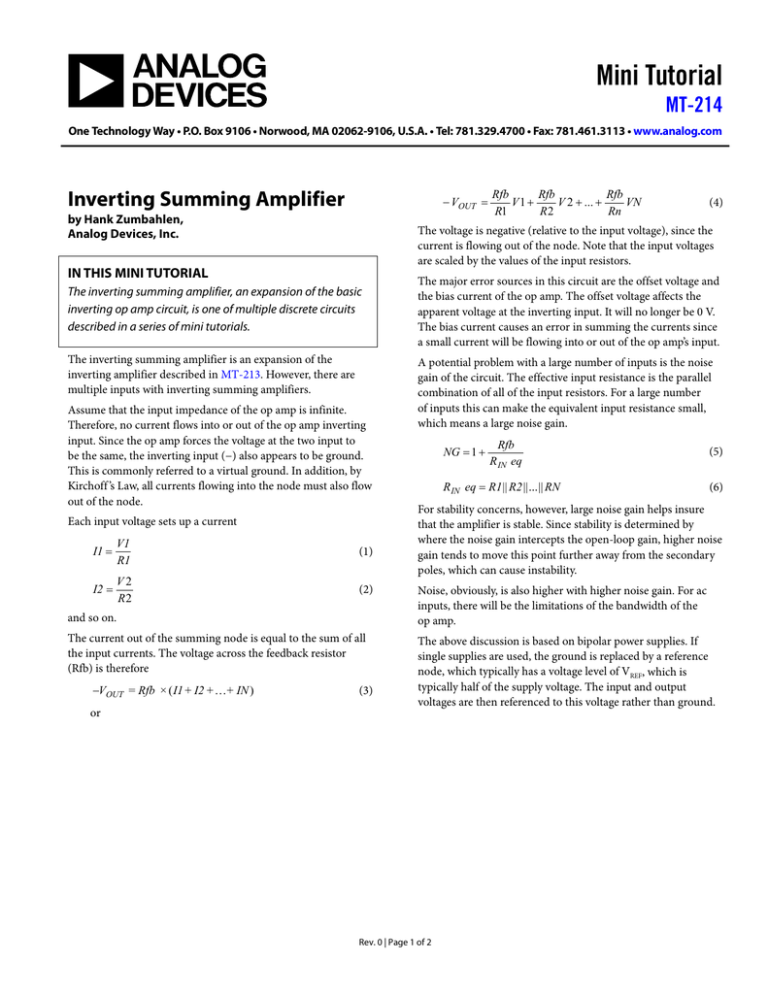
Mini Tutorial MT-214 One Technology Way • P.O. Box 9106 • Norwood, MA 02062-9106, U.S.A. • Tel: 781.329.4700 • Fax: 781.461.3113 • www.analog.com Inverting Summing Amplifier − VOUT = by Hank Zumbahlen, Analog Devices, Inc. The inverting summing amplifier, an expansion of the basic inverting op amp circuit, is one of multiple discrete circuits described in a series of mini tutorials. The inverting summing amplifier is an expansion of the inverting amplifier described in MT-213. However, there are multiple inputs with inverting summing amplifiers. Assume that the input impedance of the op amp is infinite. Therefore, no current flows into or out of the op amp inverting input. Since the op amp forces the voltage at the two input to be the same, the inverting input (−) also appears to be ground. This is commonly referred to a virtual ground. In addition, by Kirchoff ’s Law, all currents flowing into the node must also flow out of the node. Each input voltage sets up a current I1 = V1 R1 (1) I2 = V2 R2 (2) and so on. The current out of the summing node is equal to the sum of all the input currents. The voltage across the feedback resistor (Rfb) is therefore or (4) The voltage is negative (relative to the input voltage), since the current is flowing out of the node. Note that the input voltages are scaled by the values of the input resistors. IN THIS MINI TUTORIAL −VOUT = Rfb × ( I1 + I2 + …+ IN ) Rfb Rfb Rfb V1 + V 2 + ... + VN R1 R2 Rn (3) The major error sources in this circuit are the offset voltage and the bias current of the op amp. The offset voltage affects the apparent voltage at the inverting input. It will no longer be 0 V. The bias current causes an error in summing the currents since a small current will be flowing into or out of the op amp’s input. A potential problem with a large number of inputs is the noise gain of the circuit. The effective input resistance is the parallel combination of all of the input resistors. For a large number of inputs this can make the equivalent input resistance small, which means a large noise gain. NG = 1 + Rfb R IN eq R IN eq = R1 || R2 || ... || RN (5) (6) For stability concerns, however, large noise gain helps insure that the amplifier is stable. Since stability is determined by where the noise gain intercepts the open-loop gain, higher noise gain tends to move this point further away from the secondary poles, which can cause instability. Noise, obviously, is also higher with higher noise gain. For ac inputs, there will be the limitations of the bandwidth of the op amp. The above discussion is based on bipolar power supplies. If single supplies are used, the ground is replaced by a reference node, which typically has a voltage level of VREF, which is typically half of the supply voltage. The input and output voltages are then referenced to this voltage rather than ground. Rev. 0 | Page 1 of 2 MT-214 Mini Tutorial The input current becomes IN = VN − V REF RN (7) where N is the input number and the output becomes V REF − VOUT = Rfb (V1 − V REF ) + (V 2 − V REF ) + ... + Rfb (VN − V REF ) R1 RN I1 IFB R1 RFB V1 I2 R2 U1 V2 IN 10419-002 RN VN Figure 1. REFERENCE Zumbahlen, Hank. Linear Circuit Design Handbook. Elsevier. 2008. ISBN: 978-7506-8703-4. REVISION HISTORY 4/12—Revision 0: Initial Version ©2012 Analog Devices, Inc. All rights reserved. Trademarks and registered trademarks are the property of their respective owners. MT10419-0-4/12(0) Rev. 0 | Page 2 of 2
